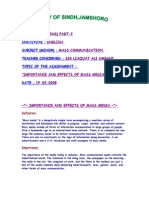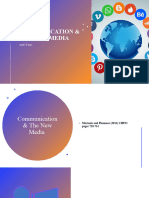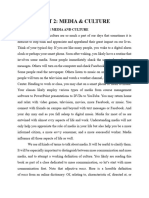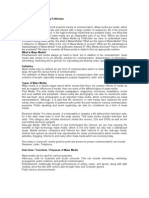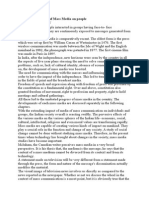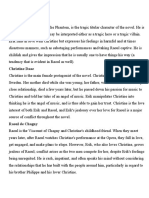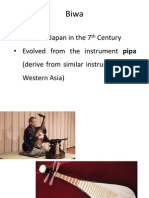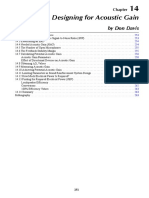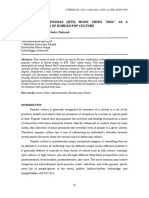0% found this document useful (0 votes)
251 views15 pagesFoundation Course Project
Mass media refers to various technologies that reach a large audience through mass communication, including broadcast media, digital media, internet media, outdoor media, and print media. Mass media has significantly influenced the development of communities by shaping cultural identity and transitioning culture from oral to mediated. Since the 19th century, communities exist within a wider mediated world due to developments in mass communication technologies like newspapers, films, radio, television, and the internet. Mass media plays a central role in modern culture by producing and distributing cultural values and ideas.
Uploaded by
pranayCopyright
© © All Rights Reserved
We take content rights seriously. If you suspect this is your content, claim it here.
Available Formats
Download as DOCX, PDF, TXT or read online on Scribd
0% found this document useful (0 votes)
251 views15 pagesFoundation Course Project
Mass media refers to various technologies that reach a large audience through mass communication, including broadcast media, digital media, internet media, outdoor media, and print media. Mass media has significantly influenced the development of communities by shaping cultural identity and transitioning culture from oral to mediated. Since the 19th century, communities exist within a wider mediated world due to developments in mass communication technologies like newspapers, films, radio, television, and the internet. Mass media plays a central role in modern culture by producing and distributing cultural values and ideas.
Uploaded by
pranayCopyright
© © All Rights Reserved
We take content rights seriously. If you suspect this is your content, claim it here.
Available Formats
Download as DOCX, PDF, TXT or read online on Scribd
/ 15

